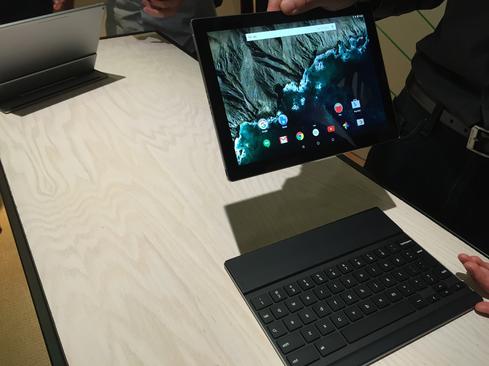Google Cardboard Camera App Expands VR ExperienceGoogle Cardboard Camera App Expands VR Experience
Google has released its Cardboard Camera app, which looks to bring the company's VR experience to Android-based smartphones.


Google's Android Event: Pixel Tablet, Served With Marshmallow
Google's Android Event: Pixel Tablet, Served With Marshmallow (Click image for larger view and slideshow.)
Google is giving an extra dimension to its Cardboard VR viewer with the release of its Cardboard Camera app, which promises to turn the user's smartphone into a virtual reality device.
The Android-only app was announced on the Google blog Dec. 3 by Carlos Hernandez, a software Engineer for Cardboard Camera.
The Cardboard Camera app will capture a 360-degree view photo when the smartphone is rotated, and replay it as a 3D scene in the Cardboard viewer, according to Google. Sounds are also captured and replayed when the scene is viewed.
Images seem to range from about 4MB to 10MB, and are output in .JPEG format. There is no current way to share the output of the app.
The app only works from left to right in a portrait mode, with no up-and-down viewing possible.
The 33MB app requires Android 4.4 or higher to work. However, it requires no account signup to function. Right now, Camera is available on Google Play, and the company finds that it has been downloaded between 1,000 and 5,000 times so far, and it's only been available since Thursday.
Initial reviews for the app -- listed as version 1.0.0.109049836 -- on the website have been generally positive, generating a 4.6/5 rating.
One user, while giving it a five-star rating, wondered about its focus. As he put it, "I'm not sure how this is different from the surround shot mode on my S6 + Google cameras. They do 360° pics in 3D too."
Other users found glitches as well: "My only complaint is that it has some weird bugs, like sending my phone to the lock screen while processing as well as making my whole phone unresponsive until it's done."
Another said, "It hasn't completed a full 360 yet for me. It says so but cuts out part of the scene. S4 on 5.0."
Still, those users still rated it as five stars.
First introduced in 2014, Cardboard has always been focused on the low end of VR experiences. It has a very low cost of entry to it, compared to alternate systems.
Google encouraged development by providing an SDK for it based on OpenGL. The SDK deals with common VR tasks such as lens distortion correction, head tracking, 3D calibration, side-by-side rendering, stereo geometry configuration, and user input event handling.
[Read what Amazon is doing with AR.]
However, even though Cardboard looks to democratize the VR experience, it may also serve to give users a poor first impression of how virtual reality works, especially when the technology is paired with a much more sophisticated system.
Yet, there is a pull from businesses like the New York Times with its NYT VR app to jump on this low-end platform. The app uses about 150MB of images for a 5-minute movie, allows up and down viewing along with side -to-side, and can be used on a smartphone even if the Cardboard viewer is not present.
**New deadline of Dec. 18, 2015** Be a part of the prestigious information Elite 100! Time is running out to submit your company's application by Dec. 18, 2015. Go to our 2016 registration page: information's Elite 100 list for 2016.
About the Author
You May Also Like






